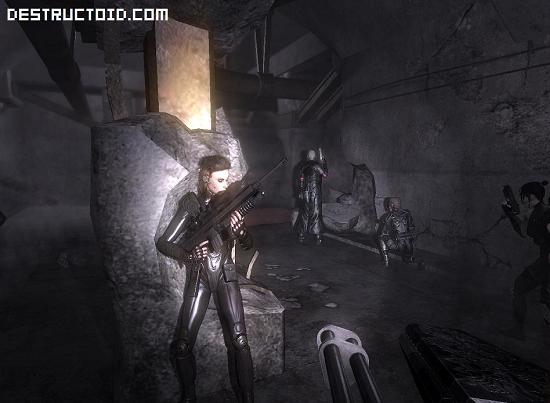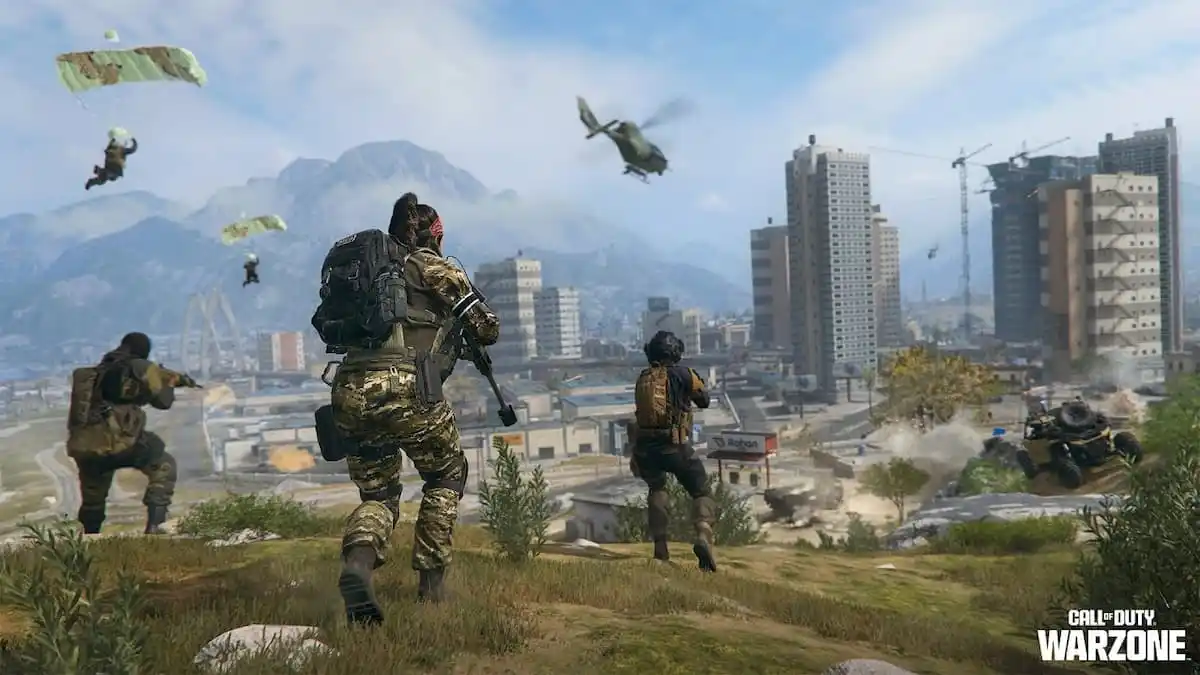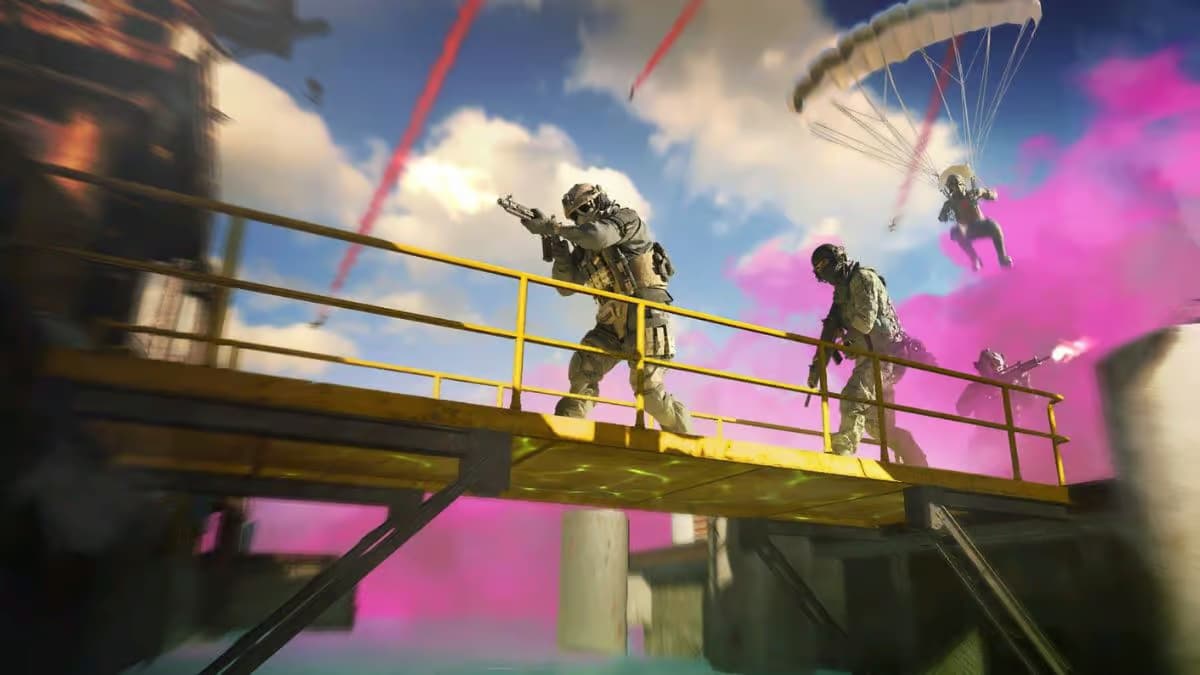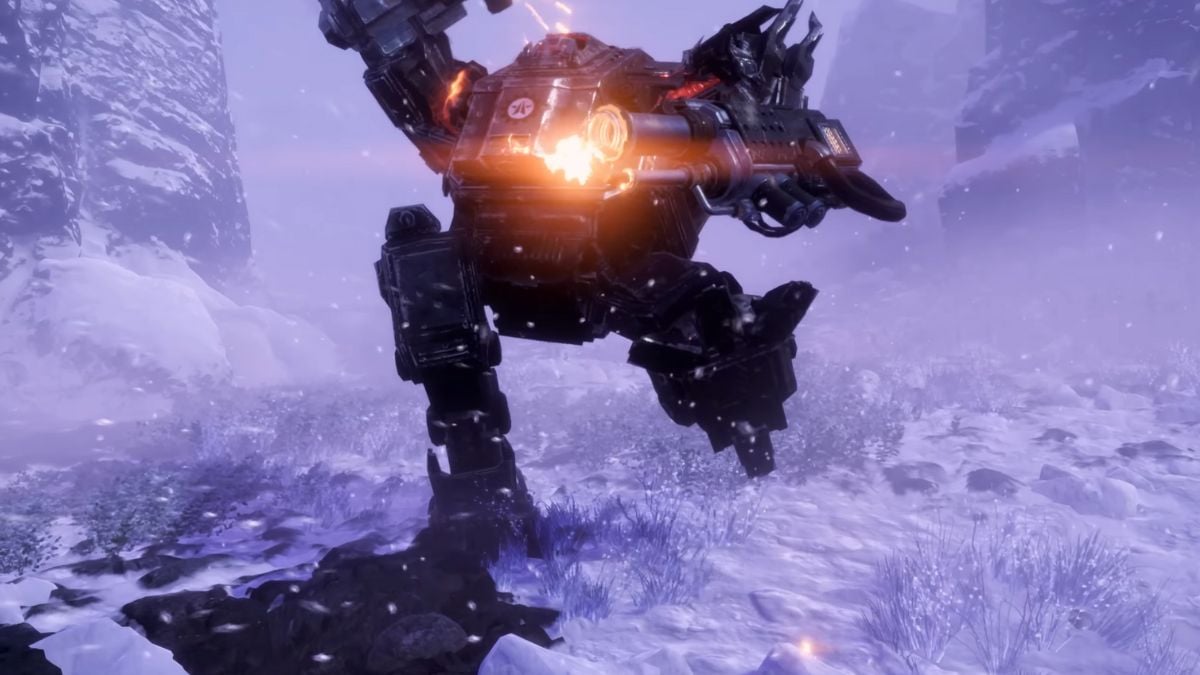Regular readers will by now be well aware of my excitement over Codemasters’ upcoming collaboration with author, film maker, artist, and all-round creative legend Clive Barker. I’ve been a huge fan of Barker’s work since my teens, and the prospect of the creator of Pinhead and Daniel Robetaille taking creative control of an ultra-violent, nightmarish FPS has had me spun into a feverish, gore-hound tizzy ever since it was announced.
I’ve already had a short hands-on earlier this year, and took away with me some very promising early impressions. On Friday though, I journeyed over to Codies’ studios for a full afternoon of demonic splatter with the Xbox 360 and PlayStation 3 versions of the game, and was able to get a much more concrete feel for it. So how was it? Was my early enthusiasm well-founded, or is Jericho another sad case of big-name talent being wasted on an unworthy product? As ever, the answers are after the jump.
It had been a long day already when I arrived at Codmasters’ countryside hideaway. Three hours in the cold-hearted company of the British train service had taken their toll, and I was in need of a big pick-me-up. “Never mind”, I thought. “A day spent with the kind of top-quality carnage I saw at the last preview, and I’ll be bouncing off the walls like a puppy with ADHD for the next week and a half.” And at least partially, I was right, as over the course of the afternoon, Jericho provided me with exactly the kind of visceral, brutal, and punishingly atmospheric gameplay a boy needs to stay perky and smiling throughout a tiring day. Were it’s bounties enough to ensure that I’m still giving the structural integrity of my house a good reason to worry though? Well, not quite.
This is by no means going to be a wholly negative report. Jericho has got a lot going for it, and from a personal perspective I’m very pleased to be able to say that a great deal of that comes from some excellent execution of Barker’s input on the part of developer Mercury Steam. There are though, definitely a few issues stopping me from giving it an unequivocal thumbs-up at the moment, and they’re made all the more frustrating by what Jericho gets right.

How much you enjoy the game is firstly going to depend on exactly what you want out of an FPS. There’s a school of thought these days which I in no way agree with which states that a shooter is only as good as its multiplayer. Campaign modes now seem to be almost becoming sidelined in favor of online play, and if you’re the sort of person who’s all about blowing holes through your friends’ heads, then Jericho is not for you.
When I asked Codemasters about how the game approaches the issue, I was told that there are currently no solid multiplayer plans at all. To be honest, it was an answer I’d been expecting, and the explanation didn’t surprise me either. With Jericho being focused on a Barker-penned narrative centering on a team of seven strong protagonists, each with unique personal abilities and attributes, and not necesarily combat-oriented ones at that, it was decided that to try to shoe-horn the characters into a contrived deathmatch scenario would have been both hard to balance in gameplay terms and cheapening to the whole project.
As a player who much prefers a strong, immersive and coherent single-player mode than for developers to redirect resources to a headshot frenzy, I totally agree with that thinking and I believe it’s a philosphy that has definitely benefited Jericho. Given the squad dynamics of the game though, having played the game it’s now easy to pine over the joys that an online co-op campaign could have blessed us with, and that’s something I’ll be discussing more later on.
For now though, let’s focus on the good things that Jericho does do. In terms of atmospheric horror experience, I genuinely can’t think of a game that’s ever got under my skin faster or clamped down harder onto my sinew once it’s messily burrowed in there. My earlier description of the game as “an assault” is just as apt as it ever was. The overall feel of Jericho is that of being plunged deep and fast into somewhere dark, dense and unpleasant with little hope of escape. That place is filled with nothing but the most nightmarish filth imaginable and none of it is your friend. As you’ll expect if you know Clive Barker’s work, the game’s production design is dripping with severely foul imagery which goes well above and beyond the level you’ll find in any other shooter at the moment, and all of it is realized brilliantly.

Sure, a Doom Imp is no-one’s choice of drinking buddy, and the Locust are the last ones asked to the prom on a consistent yearly basis, but Jericho out-does both of them from the very start, besetting the player with frantic assaults from emaciated S&M cadavers with large pieces of metal both protruding from and nailed onto their bodies, and lumbering, mutilated torsos, bulging with pus and dripping black filth from their rendered, wire-bound flesh and severed genitalia. The game might well contain the now seemingly obligatory 1940’s Nazis, but where these differ from their World War II FPS cousins is that Jericho‘s are half-naked, bondaged-up zombies, complete with fishnet stockings. That’s three fetishes for the price of one right there.
And when I said “dripping with severely foul imagery” I wasn’t being entirely figurative. Jericho‘s gore is sickeningly realistic. As Jim said after we first got to play it, one of the most striking things about the game’s visuals is just how sticky everything looks. Each of its monsters shimmers with the acrid gloss of exposed muscle and torn flesh, giving combat the feel of being attacked by a collection of angry, fresh, open wounds. When Jericho‘s creatures are seen up close, they glisten with a fetid tangibility that gives the impression that you could reach out and touch them. Not that you’d want to unless you were really weird, but you’ll definitely feel like you could.
I’ve previously summed up the Jericho gameplay experience with the word “visceral”, and I’m going to do it again, as no other collection of letters and syllables comes close. I’m not though, just talking about the literal level of innards heading outwards. While Jericho does provide some stunningly messy firefights, – Use a weapon powerful enough in a small room containing enough monsters, and the resulting explosion of entrails and limbs bouncing violently off walls can rival the ending of Hellraiser – that viscerality also comes from the sheer density and tension of the game.
Through a combination of powerful dynamic lighting, atmospheric effects and the squad dynamic, – Being in hell on your own is scary, but what about when you can hear your friends being picked off? – Jericho whips up a brilliantly upsetting sense of place, which is boosted by frequent QTE cut-scenes which crop up during both combat and scripted story events and make great use of bodily awareness in first-person.

Combat itself is punchy and frenetic. Jericho‘s monsters seriously do not let up or give the player chance to breathe for a second once they give chase, affording the game a real sense of immediacy and danger. It’s real “Kill fast or be killed faster” stuff, and for a good few hours I found it very refreshing indeed. Enemy AI doesn’t pretend to be as sophisticated as something like F.E.A.R., or as unpredictable, but I’ve never been one for unfairly comparing a game to something it’s not supposed to be, and the level of enemy behavior in Jericho suited me just fine for the type of game it is.
Smaller, faster enemies will work their way through the battlefield until they find you and try to remove your face, bigger, slower, better-armed ones will thump around further afield, using cover and ranged weaponry to their advantage, and the nippy, airborne buggers will float around before flitting in for a quick attack and escaping again. Its nothing groundbreaking, but these are slavering, hell spawn mega-bastards, not trained commandos, and in context I found myself with no real problems with the way they handled themselves. Not every game needs to be a tactical masterclass, and there will always be a place in my heart for the therapeutic excess of a well-realized monster hunt.
Speaking of tactics, I think I’m long overdue to go through how the squad-based gameplay pans out in practice. As I’ve detailed before, Jericho requires the simultaneous control of a varied seven-man team, either by giving orders or hot-swapping between characters for direct control, and the game places a major emphasis on this mechanic for both combat and general progression through the game.

The team’s individual weapon specialties – sniping, rapid-fire, heavy weaponry, sword-based melee, etc. – and supernatural abilities, which include pyrokinesis, astral projection, telekinesis, time manipulation and bullet control, are the key factors in adding variety to the game’s gun-play and also the chief means by which Jericho builds its puzzles. You might find yourself, for instance, astral projecting to a walled-in enemy in order to unlock the path ahead, or slowing down time to sneak past a machine gun turret’s hail of fire in order to disable it.
In terms of combat, the team’s special abilities can be used individually or in combination to unleash all manner of tactical whup-ass, with a couple of button presses switching from character to character pretty easily. Careful squad management allows some pretty cool multi-directional assaults, particularly on larger enemies and in more expansive areas, and at it’s best, combat can take on an almost action-RPG flavor at times.
Ironically enough though, those last two paragraphs have brought me crashing inexorably towards the problems I had with Jericho, and I’m afraid I can’t hold off my dissection of the less-than-thrilling any longer. You see, the more I played Jericho, the more I couldn’t help feeling that its focus on the squad was a little too strong, to the detriment of other elements of its design, and more frustratingly, there were times when that squad-based mechanic just didn’t work as well as it should.
First up, while the meaty, run-and-gun gameplay was actually a breath of fresh air to me in these days of free-roaming environments and non-scripted AI reigning supreme, after a few hours play the excitement started to lose inertia. It wasn’t strictly that that the game was too basic, – given the amount of combat variety available through changing characters alone, there were more than enough ways to approach taking the beasties down – rather the problem seemed to be that with the developer focus clearly on the team, the design of the actual levels had suffered.

My main issue is that the environments I played through in Jericho were just far too linear, and while that wouldn’t necessarily be a bad thing in a claustrophobic horror game, outside of the squad’s abilities, they provided very little to do. Each new section seemed to provide a whole host of possible directions for approach and flanking, but upon closer inspection the old dead ends and invisible walls tended to rear their ugly heads, particularly in the outdoor sections.
Again though, I wouldn’t have minded that too much, but a lot of them had a frustrating habit of at first appearing to definitely lead somewhere, causing me to pursue a false path for just that bit longer than I usually would have. And “just that bit longer” was coincidently often just long enough for an ambush attack to break out elsewhere and force me to run around trying to find out where the game’s genuine path, and therefore the monsters and my subsequently set-upon team, lay. It didn’t happen constantly, but it happened enough.
Other than the problems of getting lost though, I found the overall layout of the levels often too lacking in variety and options. Once on the right path, the environments were very much a case of “What you see is what you get”, with little scope for exploration of approach coming from the landscape in comparison to the protagonists’ abilities. I found myself with a similar problem to the one I had when playing through Gears Of War, whereby progression was too often a case of simply being presented with a skirmish area with a single path through, mopping up in whatever way I saw fit, and then moving on to the next one to repeat the process. Something about the game’s structure often felt too scripted and regimented, and the lack of environmental options didn’t help.

Why for instance, give me a telekinetic character who can blow holes in (pre-designated) walls and then barely give her any ability to throw things around in combat? I could briefly stall monsters by knocking them back with a quick blast before comboing with some gunfire, but I wanted to be tearing the place up. I’m sure that limiting the team’s paranormal powers in combat situations was a conscious decision to dissuade the player from over-using any one character and force the use of the whole squad, but with the advent of Bioshock I couldn’t help wishing that I could properly use the tools at my disposal to wreck and burn a few things and find new routes around the levels without having to have such actions predetermined by the game. The team’s abilities are used well in dedicated puzzle sections, but I would have loved a little more freedom to go crazy.
Rounding off my paragraphs of woe are some irritations I found with the actual use of the team themselves. While all the protagonists work brilliantly in isolation and are individually very well balanced, – telekinetic Abigail for instance, can use close-up psychic blasts, but is physically armed with a long-range sniper rifle and weaker melee attack, wheras blood-mage Church uses an automatic pistol, mid-range binding magic to hold enemies in place, and a lethal close-range katana – getting the whole group to behave as desired proved a little tricky. The main cause of my troubles was the fact that I just didn’t find the command system for ordering around characters not under direct control detailed enough.

Options are limited to “Stay”, “Go ahead”, and splitting the team into two smaller groups to do either one separately, and I found myself longing for the option to direct my team-mates to specific cover with my cross-hair and dictate their levels of aggression or defense without having to jump to them and take manual control. As it stood, my team seemed to behave in much more general terms that I would have liked, too often wading straight into a fight upon sighting the enemy and certainly not always making the best use of their surroundings. This is where the case for multiplayer co-op burst to the front of my mind and started screaming its manifesto with the full force of its lungs. Not only would it have ironed out these frustrations instantly, but having seen the amount of cover lying around that my CPU controlled team was wasting, I can safely say that it would be an absolute blast to play with a few friends.
On top of that, if the character I used to give a “Stay” command got killed, I repeatedly found myself respawning as one of the waiting party only to see the rest of them immediately forget orders and go charging into the fray too fast for me to stop them. Frustrating indeed, and a situation that led to some horrible instances of my auto-leaping from character to character only for each to drop in a hail of gunfire as soon as I took control. It’s a situation that is managable, as I saw some Codemasters staff get through a couple of sections that had repeatedly devastated me by using some well-practiced tactics (including keeping the command character alive), but as a beginner with the game, the problem verged on off-putting on more than a few occasions.

Don’t think though, that my rounding off this write-up with so much negativity means that I think Jericho is going to be a bad game. It has currently got flaws that had me leaving Codemasters’ studios a little deflated compared to how I felt when I went in, and I can’t help feeling that what I played didn’t reach the full potential of what the game could be, but I still have enough air in my balloon to want to give the game a thorough play through when it’s released around Halloween.
All of the positive points I made about it in my original preview still stand, and while they’re a little muddied at the moment due to the unnecessary irritations I found during my play-test this week, I still have hope that they’ll be enough to make Jericho a worthy horror experience. Certainly, I’m dying to try out the game with my much-more favored keyboard and mouse set-up, and to play it late at night in the dark to get the full effect it was intended to give. While I’m not expecting a complete overhaul of the things I took issue with by that point, I’m hoping that things can be ironed out a little by then and that more of the good things I saw in the game get a proper chance to shine. And please guys, please could we have a co-op update at some point? Just for me? Pretty please?




